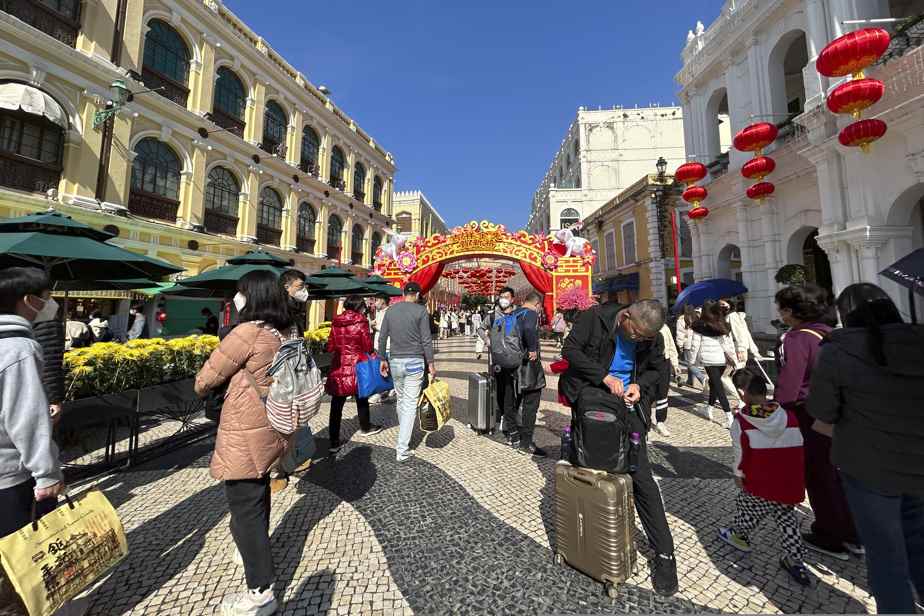(Bangkok) A hoped-for boom in Chinese tourism to Asia over next week’s Lunar New Year holiday may not materialize, as most travelers choose to stay in China if they go anywhere.
From the beaches of Bali to the powdery ski slopes of Hokkaido, the hordes of Chinese people often seen in pre-COVID times will forever be missing, tour operators say.
It’s a bitter disappointment for many companies who hoped pandemic lean times were over now that Beijing has eased travel restrictions and stopped requiring multi-week quarantines. Still, overseas travel bookings have soared, suggesting it’s only a matter of time before the industry recovers.
“I think tourists will come back around late February or early March at the earliest,” predicted Sisdivachr Cheewarattaporn, president of the Association of Thai Travel Agents, pointing out that many Chinese people do not have passports, flights are limited and tour operators are still preparing to manage group travel.
The risks of COVID-19 are another important factor as outbreaks linger after the political about-face in China, he added in an interview. “People may not be ready, or maybe they are preparing. »
For now, the Chinese territories of Macau and Hong Kong appear as the most sought-after destinations.
Just days before the start of the Lunar New Year on Sunday, iconic tourist sites in the former Portuguese colony, such as historic Senado Square and the ruins of St. Paul, were packed. The gaming halls of two major casinos were largely full, with groups of Chinese visitors seated around the tables.
“I’m so busy every day and I don’t have time to rest,” said Lee Hong-soi, the owner of a souvenir shop. He added that sales have recovered to about 70% to 80% of pre-pandemic days, compared to next to nothing just a few weeks ago.
Kathy Lin had come from Shanghai, partly because it was easy to get a visa, but also because she was concerned about the risks of catching COVID-19. “I don’t dare to travel abroad yet,” she said as she and a friend took photos.
That worry is keeping many would-be vacationers at home, even after China eased “zero COVID” restrictions that aimed to isolate all cases with mass testing and onerous quarantines.
“The elderly in my family have not been infected and I don’t want to take any risks. There is also the possibility of being infected again with other variants,” said Zheng Xiaoli, a 44-year-old woman employed by an elevator company in Guangzhou, southern China. Africa was on her to-do list before the pandemic, but despite her desire to travel abroad, she said, “There are still uncertainties, so I will exercise restraint.”
Cong Yitao, a listener living in Beijing, was not afraid of catching the virus since his whole family has already had COVID-19. But he was discouraged by testing restrictions and other limits imposed by some countries, including the United States, Japan, South Korea and Australia, after China eased its pandemic precautions.
“It seems that many countries are not welcoming us,” said Cong, who instead planned to head to a subtropical destination in China, such as Hainan Island or Xishuangbanna, to enjoy the warm weather.
According to Trip.com, a major travel services company, outbound travel bookings for the Lunar New Year holiday from January 21-27 have increased more than fivefold ― but that’s compared to virtually nothing this year. before, when China’s borders were closed to most travellers.
Southeast Asian travel bookings increased tenfold, with Thailand being the top pick, followed by Singapore, Malaysia, Cambodia and Indonesia.
Trips to other favorite spots, like the tropical island of Bali and Australia, have been limited by a lack of flights. But that is changing, with new flights added daily.

PHOTO FIRDIA LISNAWATI, ASSOCIATED PRESS
A beach in Bali
“You will definitely see an increase from last year when China was still closed, but I don’t think you will see a huge increase in outbound travelers to different destinations in Asia Pacific, let alone Europe or of the Americas,” speculated Haiyan Song, a professor of international tourism at Hong Kong Polytechnic University.
Tourism Australia predicts spending by international travelers will exceed pre-pandemic levels within a year. Prior to the COVID-19 disruptions, Chinese accounted for nearly a third of tourist spending, or nearly US$9 billion.
Bangkok’s Suvarnabhumi Airport has increased its staff to cope with more than 140,000 arrivals a day during the Lunar New Year rush, although only individual Chinese travelers will come for now, group trips from China not yet resumed.
As a bright orange sun set behind the ancient Wat Arun on Bangkok’s Chao Phraya River, a Shanghai man who would only give his last name, Zhang, posed with a companion in traditional Thai costumes colored in silk.
“It’s very cold in China and Thailand has a summer climate,” Zhang said, adding that he knows many people who have booked tickets to get away from the cold and wet weather in his hometown.
Yet for many Chinese, the lure of world travel has been overshadowed, for now, by a desire to travel to their hometowns and reunite with their families, nearly exactly three years since the first major outbreak. of coronavirus that hit the central city of Wuhan, in one of the greatest disasters of modern times.
Isabelle Wang, a finance worker in Beijing, has traveled to Europe, the Middle East and parts of Asia. After three years of a slower-paced life during the pandemic, her priority is reuniting with her family in Shangrao, a city in south-central China.
“There is still a lot of time left in our lives, and there will definitely be opportunities to go abroad later when we want to,” she said.
